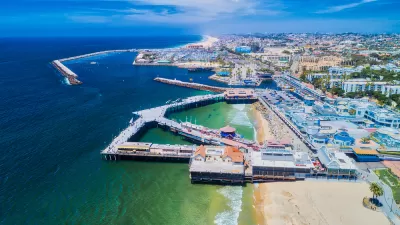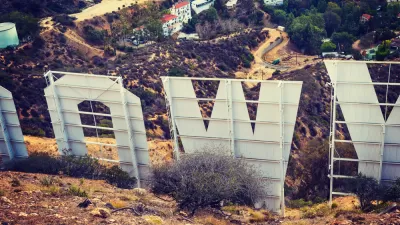There is still time to reverse the environmental outcomes of American suburbs. Researchers in Los Angeles, considered by many to be the poster child for U.S. sprawl, have been at work on the problem for years.

“Currently, the sprawling outer areas of US cities are environmentally unsustainable and a wasteful use of land,” begins a provocative article by Dana Cuff, a professor of architecture and urban design at the University of California, Los Angeles (UCLA).
Among the complaints about the U.S. suburban proclivity, Cuff lists “ social stratification and an unequal distribution of wealth and opportunity,” greenhouse gas emissions, long commute times, congestion, high infrastructure costs, and high housing costs.
“But even US suburbs are not beyond redemption,” writes Cuff to switch to a more optimistic note about the potential for suburban redemption.
Promoting ideas explored by over a decade of work at cityLAB, a urban-design research center at UCLA, to solve the problems of sprawl in Southern California. Among the prescriptions offered here are a call to change the rules about what can be built and where (“Three-quarters of residential areas in US cities are designated as ‘single family’, meaning that just one house can be built on each plot”) as well as parking requirements.
Cuff also argues for the use of state law to preempt local zoning regulations, writing: “My research indicates that well-designed state laws on land use can boost public benefits while allowing local jurisdictions to adjust projects to local needs. For example, cities with relatively large houses or small plots could customize laws to allow secondary units to be carved out of existing homes.”
The source article, linked below, concludes with a series of questions recommended by Cuff to begin to address the poor environmental outcomes of suburbia.
FULL STORY: Suburbs are a climate disaster, but they can be redeemed

Alabama: Trump Terminates Settlements for Black Communities Harmed By Raw Sewage
Trump deemed the landmark civil rights agreement “illegal DEI and environmental justice policy.”

Planetizen Federal Action Tracker
A weekly monitor of how Trump’s orders and actions are impacting planners and planning in America.

The 120 Year Old Tiny Home Villages That Sheltered San Francisco’s Earthquake Refugees
More than a century ago, San Francisco mobilized to house thousands of residents displaced by the 1906 earthquake. Could their strategy offer a model for the present?

In Both Crashes and Crime, Public Transportation is Far Safer than Driving
Contrary to popular assumptions, public transportation has far lower crash and crime rates than automobile travel. For safer communities, improve and encourage transit travel.

Report: Zoning Reforms Should Complement Nashville’s Ambitious Transit Plan
Without reform, restrictive zoning codes will limit the impact of the city’s planned transit expansion and could exclude some of the residents who depend on transit the most.

Judge Orders Release of Frozen IRA, IIJA Funding
The decision is a victory for environmental groups who charged that freezing funds for critical infrastructure and disaster response programs caused “real and irreparable harm” to communities.
Urban Design for Planners 1: Software Tools
This six-course series explores essential urban design concepts using open source software and equips planners with the tools they need to participate fully in the urban design process.
Planning for Universal Design
Learn the tools for implementing Universal Design in planning regulations.
Clanton & Associates, Inc.
Jessamine County Fiscal Court
Institute for Housing and Urban Development Studies (IHS)
City of Grandview
Harvard GSD Executive Education
Toledo-Lucas County Plan Commissions
Salt Lake City
NYU Wagner Graduate School of Public Service





























